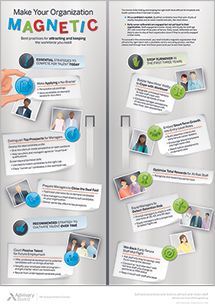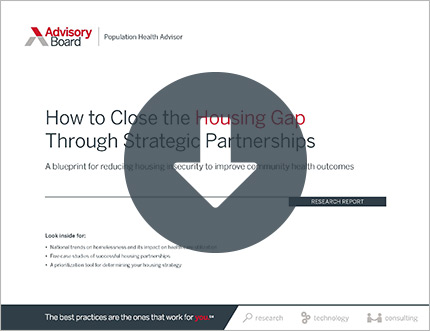Auto logout in seconds.
Continue LogoutWelcome to the "Lessons from the C-suite" series, featuring Managing Partner Eric Larsen's conversations with the most influential leaders in health care.
In this edition, Ram Raju, SVP and Community Investment Officer at Northwell Health, talks to Eric about the "art and science" of addressing social determinants of health, a career sparked by his father's experience following Gandhi's fight for India's independence, and why we need to move from provider-based outcomes to patient-based outcomes.

Ram Raju, SVP and Community Investment Officer, Northwell Health
Question: Ram, I consider you one of the most articulate and forceful champions for serving the underprivileged, particularly with your focus on social determinants of health. There's a lot of excitement and curiosity about your new role as Northwell's SVP and Chief Community Investment Officer.
But before we dive into discussing your new role, I'd like to ask how you became so passionate about these issues? If I remember correctly, you've said this sense of community ownership came from your father—who I believe was imprisoned during the uprising for Indian independence.
Ram Raju: Yes, you are absolutely correct. My father and many others of his generation followed Mahatma Gandhi in his fight for Indian independence. But India's independence, did not mean independence for all. Caste still divided society based on socioeconomic status.
The lowest members of the caste system were the "Harijans," or "Untouchables," who lived in abject poverty and socially on the fringes of society. For example, they were not allowed to walk in the neighborhoods where upper caste members lived. Many members of Indian society at that time perceived the life of a Harijan to be valued less than that of an upper caste member.
So there were two Indias: There was the India of the independent and privileged, and then the India of those also independent but still lacking the freedom to escape a future determined by their low caste birth. And my first impression of this divide was when I was a child and my father decided to act radically. He invited about 15 Harijans to sit and eat lunch with us. A simple gesture, which was absolutely revolutionary at the time. One of the most memorable experiences of my life.
Q: That's remarkable. How did that experience in India ultimately shape your perspective on health disparities here in the United States?
Raju: It helped me understand that there are separate and unequal communities here in America as well. The inequity could be social, economic, or related to health care. In spite of our best efforts, we still have a two-tier health care system in our country.
People with wealth can access convenient, high quality health care. Those with limited financial resources pay for care with their time. They wait in the ED for hours to be seen, or they wait in the clinics of the public systems for half a day, a full day, for routine care.
Learn about Advisory Board's Health Disparities Initiative
The science of social determinants of health
Q: Has your perspective of what it means to address social determinants of health changed over time? How has that influenced your career trajectory?
Raju: My focus on this issue began with the Institute of Medicine's "Unequal Treatment" primer. In a very vivid way, the report shows the enormous health care disparities in different parts of the country—and within relatively small geographic areas. For instance, if you happen to live on the South Side of Chicago, your average life expectancy is 69 years. But if you move to the North Side of Chicago, your life expectancy improves to 82 years.
That finding was absolutely shocking and inspired me to address health care disparities in this country. So I left my private practice and went into public health systems to better understand the reasons why these disparities exist.
Q: And what did you find?
Raju: The more I examined the issue, the more I learned how prevalent health care disparities were.
Initially, I believed that disparities in health care existed because of a lack of access. But I soon realized that access alone was not enough. Then, I thought access that is geographically convenient to communities is the key. We tried to do this in Cook County by creating 136 access points over 200 miles under county care. Yet, this only moderately improved health outcomes.
This led me to consider coupling targeted access with cultural competency. We may give people access, but if the health care providers don't understand their patients, if they don't speak their patients' languages, if they don't understand their patients' beliefs, progress will not be made. Cultural diversity may sound like a mere nicety, but a person's culture is one of the most important factors driving his or her health care decisions.
So in NYC Health + Hospitals we started teaching all of our providers to be aware that patients bring their cultural biases and beliefs, their different languages, and their mistrust of the health care delivery system with them. With this education and training in cultural competency, the healthcare community took a huge leap—and it became a national standard. Now, the Joint Commission requires all hospitals to undergo cultural competency training.
Q: I'd like to go deeper into this, because you've been a prominent advocate for diversity and for having the staff at your hospital reflect the communities you serve. And Northwell's president and CEO, Michael Dowling, has also been a longstanding champion for diversity. How do you collectively advance this priority?
Raju: In an ideal world, caregivers would reflect the diversity of the patient population they serve. As Northwell expands, Michael is committed to keeping as a priority improving the diversity of our workforce across the system.
We know that you can't do that effectively by only identifying diverse competent mid-level candidates. This may help create a pipeline for senior leadership, but we have to start much earlier to flood the pipeline. We have to go back to communities and schools to get young people interested in health care.
So Northwell recently ran a program called "Spark!" where we had schoolchildren from diverse communities come in and see how different parts of health care work, such as rehab or robotic surgery. The children get early exposure to the health care system this way—not at the graduate level, but at the grade school level to be inspired as well as to begin to take steps towards a career in the field.
Q: I think you're identifying some of the real structural and endemic causes of health disparities—the implicit racial and residential segregation that still persists… too often right in the backyards of our multibillion-dollar health systems. And yet we haven't been able to assume the responsibility that you're challenging us to assume, which is, "Look, this is a social issue. We own this."
So I want to ask, in your opinion, what are the interventions now that will yield immediate results and how do we measure our impact? I'm thinking, for example, of Nuka in Anchorage, Alaska, where the Southcentral Foundation built a system integrating a primary-care system—dietitians, social services, PCPs, etc.—across some of the most marginalized communities living in these small villages. And the Medicaid expenditures are about 30% lower than equivalent populations.
So we know it can be done, but I think it's rare. So, as you think about intervening short-term in addition to the long-term structural fixes, how do you go about doing that? How do you engage such a broad array of different stakeholders?
Raju: I agree with your take. The Nuka example is a perfect one. Let me share another example of how we went about opening a new clinic in an impoverished neighborhood. Our real estate team had identified a location for the clinic. But before moving forward, I convened a meeting I with various stakeholders, including the local police, transportation, sanitation, local grocery stores, and schools. I said, "This is where we are trying to open a clinic. What do you think?"
The local police captain replied, "Ram, don't open it in there. Public safety is an issue there. It doesn't have enough foot traffic, and it's not close to a transportation hub. You have to walk, like, eight blocks to get into this, right? Do me a favor. Move this clinic six blocks to this area. You will have everything available."
So that's what we did. The take away for me was that when you create an access point, it is not exclusively a real estate decision. Other factors need to be considered because health care is not delivered in isolation. It is delivered in the context of social determinants of care, such as safety, transportation, sanitation, availability of good food, and the schools.
As a provider, you don't just look at the needs of the patient purely from the perspective of what makes sense to you; you have to look at what makes sense to the patient and the community he or she is a part of.
The art of addressing social determinants of health
Q: I think that's a powerful insight, and yet too few health systems are articulating it the way that you just did. And the systems that do, haven't necessarily figured out to make the payment hydraulic work. So how do you fund the efforts that you're talking about?
Raju: Unfortunately, health care delivery system reforms are coming at a much faster pace than payment reforms, so that makes it very difficult.
Another challenge is that we are all trained on how to take care of sick people, not how to keep people healthy. The sicker they are, the more helpful my specialization is—it's rescue care.
This mindset is beginning to change due to the shift toward value-based payments, which pushes people to figure out how to create better outcomes. It's especially apparent with the readmission penalty. Providers quickly realized that the key driver of readmissions isn't the care you provide patients while they stay in the hospital—it's the ZIP code they're discharged to.
Use our Population Health Intervention ROI Estimator
But realizing that is only half the battle; you still have to figure out how to improve outcomes after discharge. When the health care industry looked at this initially, it thought it could just replicate the inpatient setting in the outpatient setting. In the hospital, we send doctors and nurses to the patients' bedside to manage their care. So we thought we can call providers and nurses care managers and send them to people's homes to provide similar care.
But that way of delivering services is not scalable or sustainable. Plus, it's based on the premise that the patient can't be trusted. It's paternalistic medicine. Most recipients of healthcare are not active participants in healthcare; they are passive recipients. We need to change this mindset by empowering patients more.
Q: OK, so if that's what we shouldn't do—what we need to step back from—where do providers start instead?
Raju: A better approach requires more effective forms of health literacy. For example, if John has uncontrolled diabetes, a doctor currently might tell him, "John, you've got to do this. Otherwise, you're going to lose your leg." But I'd rather see a conversation start with, "John, if you keep going down this path, your chances of dancing with your daughter on her wedding day is only 40%." So, John has an incentive to change his behavior. His health goals are tied to his life goals, and now he has a reason to do what needs to be done.
We also need to work to better understand social support systems. For example, in present day practice the first question we ask a patient is, "Do you have anybody at home living with you?" If the answer is no, we say, "All right, I'm going to send you a nurse or home health aide." But we never ask our patient if he or she has other supports, like a friend she might see every day, or other non-health care resources like a church.
Furthermore, we need to improve patients' socioeconomic conditions so they can incorporate into their lives our recommendations on how they can better care for themselves. A patient's health and social factors are interconnected. Disparities in healthcare exist mainly because of socioeconomic conditions. A provider might convince a patient that he needs to walk half a mile every day—but if he lives in a fourth-floor walk-up apartment and has a fear of getting mugged every time he steps into the elevator, he's not going to take that walk. If we don't resolve these non-clinical barriers, we are not going to realize the health outcomes we seek for vulnerable communities, despite our best efforts.
Q: That approach requires a pretty significant shift in how we do medical training and how we empower frontline caregivers. It makes me think of the Nuka example again, where they are spending disproportionately more on personnel costs up front—to really embed frontline caregivers into the small communities—but correspondingly less on specialist visits, hospitalizations, ED visits, pharmaceutical interventions.
So, there is empirical data to support the cultural shift that you're talking about. But does our current payment system let you invest in those resources? Put another way, do you need to own the full premium dollar to effect the upfront investments that you're talking about?
Raju: There will be intense debate to determine who owns the premiums because there is a big industry that wants to own the premium dollars and dispense them as they see fit. Under the ACA, the government is increasingly working directly with the patient, with the hospitals, and if that works well, then it could basically rule out the managed care intermediaries. That's a big shift.
If the providers want to own the premiums, they will need to learn how to risk manage their patient populations. Hospitals do revenue cycles for billing. But we need to do revenue cycles for severity of illness instead. Because if you understand the illness, you have better risk management. If you use a revenue cycle only to code better to increase revenue, it's not going to give you the background information you need to manage risk.
So we have to teach our CFO to do something very different. They can't just have data, they need actionable data to effectively manage risk. CFOs often understand revenue structure very well, but understanding cost structure is different, and difficult, because they don't know where the costs are. For instance, why does one patient with pneumonia costs three times more than another patient with the same pneumonia?
As outcomes are more and more dependent on the social determinants of health, CEOs need to build the skill of engaging the community, of understanding socioeconomic factors.
Ram's job in practice
Q: In your new role, it seems like there's an ambassadorial angle. You've got to be the convener, addressing public policy, addressing the not-for-profit side, the social services side—and then somehow figure out how the funds flow. Fair characterization? Is this part of your mandate?
Raju: Yes, very fair characterization. But not only convene; health systems are also in a unique position to connect the right stakeholders to create comprehensive solutions to improve the wellbeing of the communities we serve.
As large health care systems we have economic leverage. We are often the major employer in the surrounding community where a hospital is located. We create jobs; we sustain economies; we have political clout in the community; we have social influence.
Take for example my newly created position at Northwell to build a new department to identify and address the social determinants of health of our patients and communities. Our goal is to blend our assets as the largest health care provider and private employer in New York State with the expertise of community-based organizations, as well as the resources of the communities themselves to implement data driven and evidence based solutions. We hope the strategies we execute, and the processes we use to develop them, can serve as a model for improving the health outcomes of other communities by other health care systems in the US.
Q: Ram I think your new role is quite unique. I'm not familiar with other organizations of Northwell's size deputizing this set of responsibilities to a C-suite role. As you think about the scope of your role -beyond that ambassadorial function we talked about—what are your priorities?
Raju: First, I have to make sure that everyone in the organization understands that community marketing is not community benefit. In any given organization, you have about 10 different departments doing community outreach, but there's limited coordination between them, and it does not produce maximum value for the community.
Second, I have to articulate that community health is only a small portion of community benefit. We also need to be a convener of conversations around the socioeconomic issues we've discussed, such as social services and transportation, so that we can improve health in the communities we serve.
Then there's the financial side. Hospitals need to strategically spend their community benefit dollars in a way that produces value for the community and for the organization, which means we need a process to measure our impact and identify strong correlations between our actions and patient outcomes.
Q: What does this look like in practice? Looking down the road, how will you define and measure success?
Raju: Currently, there is a range of projects we are developing. For example, at a system level, we are creating the nation's first social vulnerability index for patients which leverages the latest in IT and big data analytics to integrate health care and community information to improve health outcomes of under resourced and underserved communities.
While at a more local level, at Southside Hospital, which serves one of the most disadvantaged communities in Suffolk County, we looked into who received "treat-and-release" care at the ED. We found that 67% of these patients came from the same three zip codes. From there, we used census data to determine that five of the six social determinants of health coincided with these people—they were generally foreign-born, unemployed, living in public housing, low-income, and with no high school education.
We overlapped that data with USDA data to find how many of them are living in food-insecure areas. Three areas lit up, and when we looked at what common condition they came in for, it was respiratory illnesses. So now, we are going to first identify which interventions have the most impact, and then we'll select the community-based organization partners to implement them.
Only then will we start to think about monetization. And I want to monetize it—how much money you lost, how much money you invested—that's the scientific basis for running a community-based program.
Q: And once you've implemented that kind of a program, how do you quantify the impact? It strikes me that you're doing something that's revolutionarily patient-centered—so much so that the old metrics may not apply.
Raju: That's right. Currently, I think the outcomes that we as an industry choose to measure are all provider-based outcomes; they are not patient-based outcomes.
When I say this, doctors get offended. They say, "What do you mean? Provider-based or patient-based are the same outcomes. Am I not working for the betterment of my patient?" Yes, you are, but the metrics you're using don't always align with your patient's wishes.
For example, as a vascular surgeon, I had a limb salvage rate of about 87%, which is supposed to be very good as a provider. But if you ask a patient—the patient might have both legs, but he's in a wheelchair, and he's had three surgeries, and he's just seen a commercial for someone with an artificial leg going for a run. So the patient says, "Do me a favor. Get me out of the wheelchair, give me that artificial leg, and let me get on with my life." That's the outcome he wants, but if I give him the outcome, my limb salvage rate goes down.
So let's not think that all provider-based outcomes are patient-based outcomes. Too often, we ask the patient, "What is the matter with you?", instead of asking, "What matters to you?" That's what we need to change.
Get more lessons from the C-suite
Check out our recent must-read interviews with other top hospital and health system leaders:
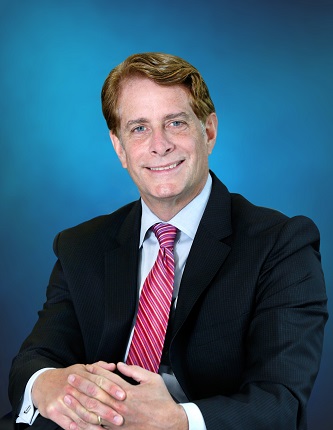 Can two CEOs co-lead? Bob Garrett and John Lloyd are showing how it's done.
Can two CEOs co-lead? Bob Garrett and John Lloyd are showing how it's done.
Bob Garrett and John Lloyd, co-CEOs of Hackensack Meridian, talk about their unique leadership structure, building a medical school for tomorrow's doctors, and what will headline Hackensack Meridian's press releases for 2022. Read our interview with Bob and John.
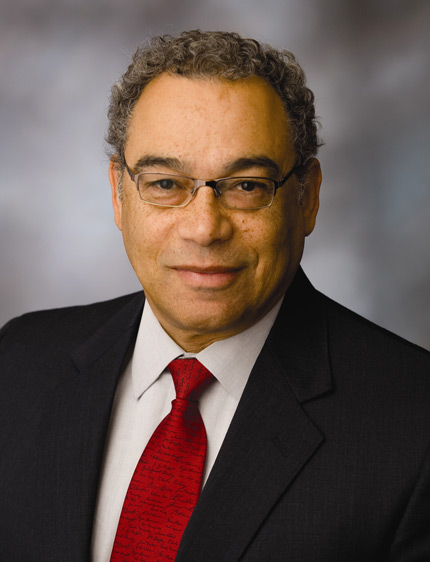 As a soldier, Legacy's CEO witnessed the fall of the Berlin Wall. Here's how George Brown is serving his system now.
As a soldier, Legacy's CEO witnessed the fall of the Berlin Wall. Here's how George Brown is serving his system now.
George Brown, CEO of Legacy Health System, talks to Eric about transitioning into civilian care after years in the military, addressing the social determinants of health, and collaborating with non-traditional partners. Read our interview with George.
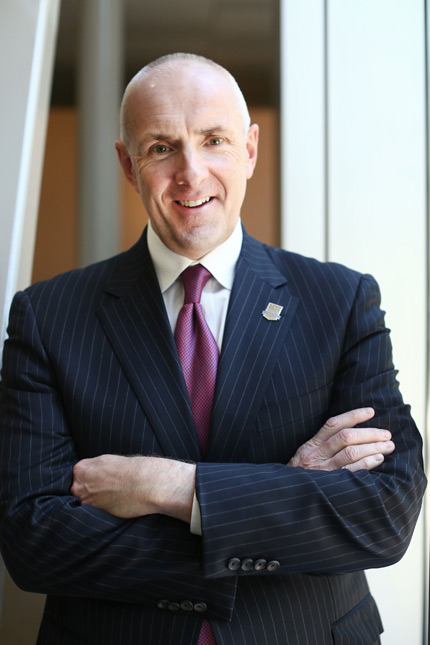 Warner Thomas built a $3B health system in the wake of Hurricane Katrina. Here's how.
Warner Thomas built a $3B health system in the wake of Hurricane Katrina. Here's how.
Warner Thomas, president and CEO of Ochsner Health System, talks about rebuilding a stronger health system after Hurricane Katrina, managing "hypertrophic growth" by focusing on the patient, and the most rewarding part of being a leader. Read our interview with Warner.
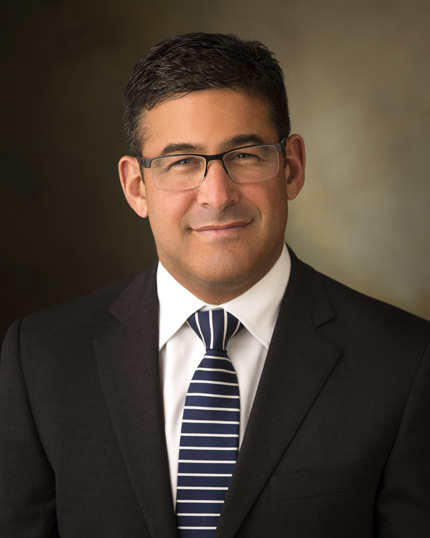 Building the 'Tesla' of health systems: Where Marc Harrison plans to take Intermountain next
Building the 'Tesla' of health systems: Where Marc Harrison plans to take Intermountain next
Marc Harrison, president and CEO of Intermountain Healthcare, talks about crafting a cohesive team with employees from 71 countries, taking Intermountain from a "horseless carriage" to a Tesla, and leading as a physician—and as a patient. Read our interview with Marc.
Don't miss out on the latest Advisory Board insights
Create your free account to access 1 resource, including the latest research and webinars.
Want access without creating an account?
You have 1 free members-only resource remaining this month.
1 free members-only resources remaining
1 free members-only resources remaining
You've reached your limit of free insights
Become a member to access all of Advisory Board's resources, events, and experts
Never miss out on the latest innovative health care content tailored to you.
Benefits include:
You've reached your limit of free insights
Become a member to access all of Advisory Board's resources, events, and experts
Never miss out on the latest innovative health care content tailored to you.
Benefits include:
This content is available through your Curated Research partnership with Advisory Board. Click on ‘view this resource’ to read the full piece
Email ask@advisory.com to learn more
Click on ‘Become a Member’ to learn about the benefits of a Full-Access partnership with Advisory Board
Never miss out on the latest innovative health care content tailored to you.
Benefits Include:
This is for members only. Learn more.
Click on ‘Become a Member’ to learn about the benefits of a Full-Access partnership with Advisory Board
Never miss out on the latest innovative health care content tailored to you.
